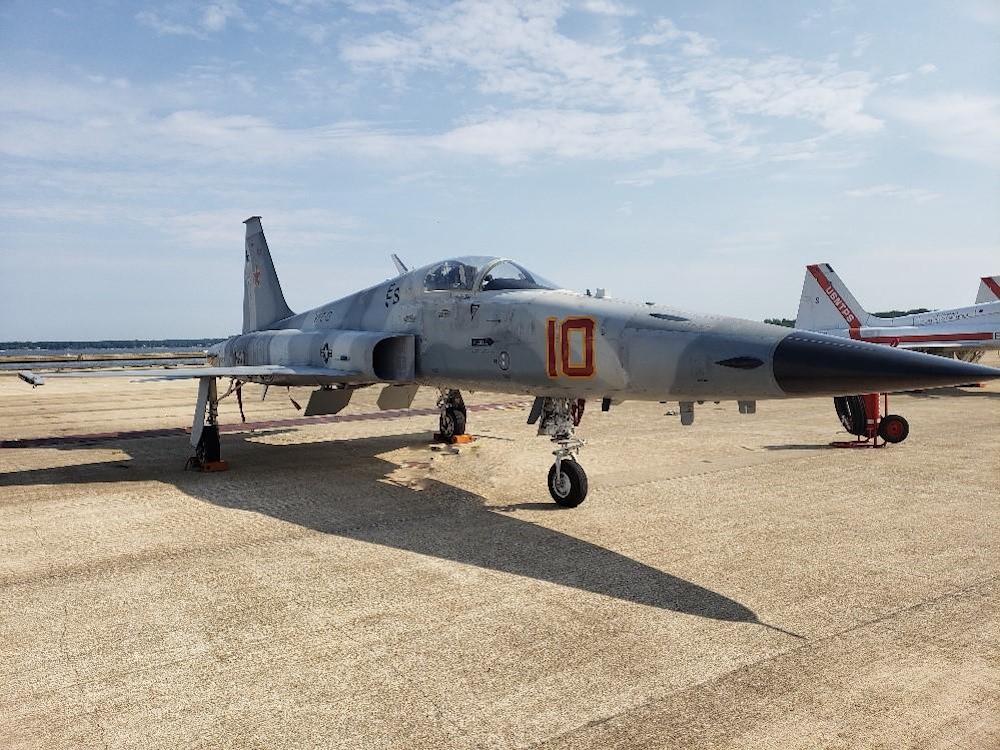Click Here to View This Page on Production Frontend
Click Here to Export Node Content
Click Here to View Printer-Friendly Version (Raw Backend)
Note: front-end display has links to styled print versions.
Content Node ID: 407406
Included in the Fiscal Year 2022 Marine Corps Aviation Plan is an intention to create a second squadron to provide dissimilar air combat training for fighter units. The unit, Marine Fighter Training Squadron (VMFT) 402, will activate at MCAS Beaufort in South Carolina in 2023 to provide adversary assets for East Coast Marine squadrons, with initial operating capability slated for 2024.
The creation is part of a plan to address a perceived shortfall in U.S. Marine Corps adversary training and also modernization of the fleet, which currently employs the Northrop F-5N (single-seat) and F-5F (two-seat) Tiger II aircraft drawn from stocks acquired from the Swiss air force in the late 2000s. The single current Marine adversary unit is VMFT-401 “Snipers” at MCAS Yuma, Arizona, which began operations with leased IAI F-21A Kfirs in 1987. It transitioned to the Northrop F-5E/F Tiger II in 1989 and subsequently acquired the updated F-5N/F.
VMFT-401 is about to transition to the F-5N+ and F-5F+. Under the Avionics Reconfiguration and Tactical Enhancement/Modernization for Inventory Standardization (ARTEMIS) program, the Navy is upgrading its F-5s with modernized cockpit and avionics, overhauled airframes and engines, and the addition of safety and reliability features, while addressing obsolescence issues.
The first F-5N+ arrived at NAS Patuxent River in September for testing. Work is being performed by Tactical Air Support, which also operates its own fleet of upgraded F-5Es on contracted “Red Air” work. The company is supporting a Block Upgrade program that is expected to integrate the Tactical Combat Training System (TCTS) II in the near future, with this system permitting the injection of synthetic adversaries.

Initially, ARTEMIS will cover the 16 F-5Es and six F-5Fs recently purchased from Switzerland and held in storage since their acquisition. However, it is expected to be extended to the 40-plus fleet of F-5N/Fs currently in service with Navy and Marine Corps adversary squadrons. This fleet includes three so-called “Frankentiger” two-seaters, which were created by mating the rear end of single-seat F-5Es with two-seat F-5F cockpit sections. VMFT-401 will be among the early recipients of the F-5N+/F+, and VMFT-402 is also due to begin operations with this variant.
In the meantime, the Navy’s adversary units are undergoing changes as the last of the “legacy” F/A-18 Hornets are withdrawn. Fleet Composite Squadron (VFC) 13 “Fighting Saints” at NAS Fallon, Nevada, received its first ex-U.S. Air Force Lockheed Martin F-16C Block 32 in late April. These are replacing F-5N/Fs that, in turn, are being passed on to VFA-204 “River Rattlers” at NAS/JRB New Orleans, Louisiana, to replace Hornets. In the process, the squadron will redesignate as VFC-204.
This process will leave VFC-12 “Fighting Omars” at NAS Oceana, Virginia, and the Naval Air Warfare Development Center (NAWDC) at Fallon as the last operators of the “legacy” Hornet. The NAWDC is expected to receive F-16C Block 32s and F-16D Block 25s later this year. VFC-12 is slated to receive early-production F/A-18E/F Block I Super Hornets, although whether sufficient numbers become available to achieve this is uncertain, and further F-16s may be transferred from the Air Force.